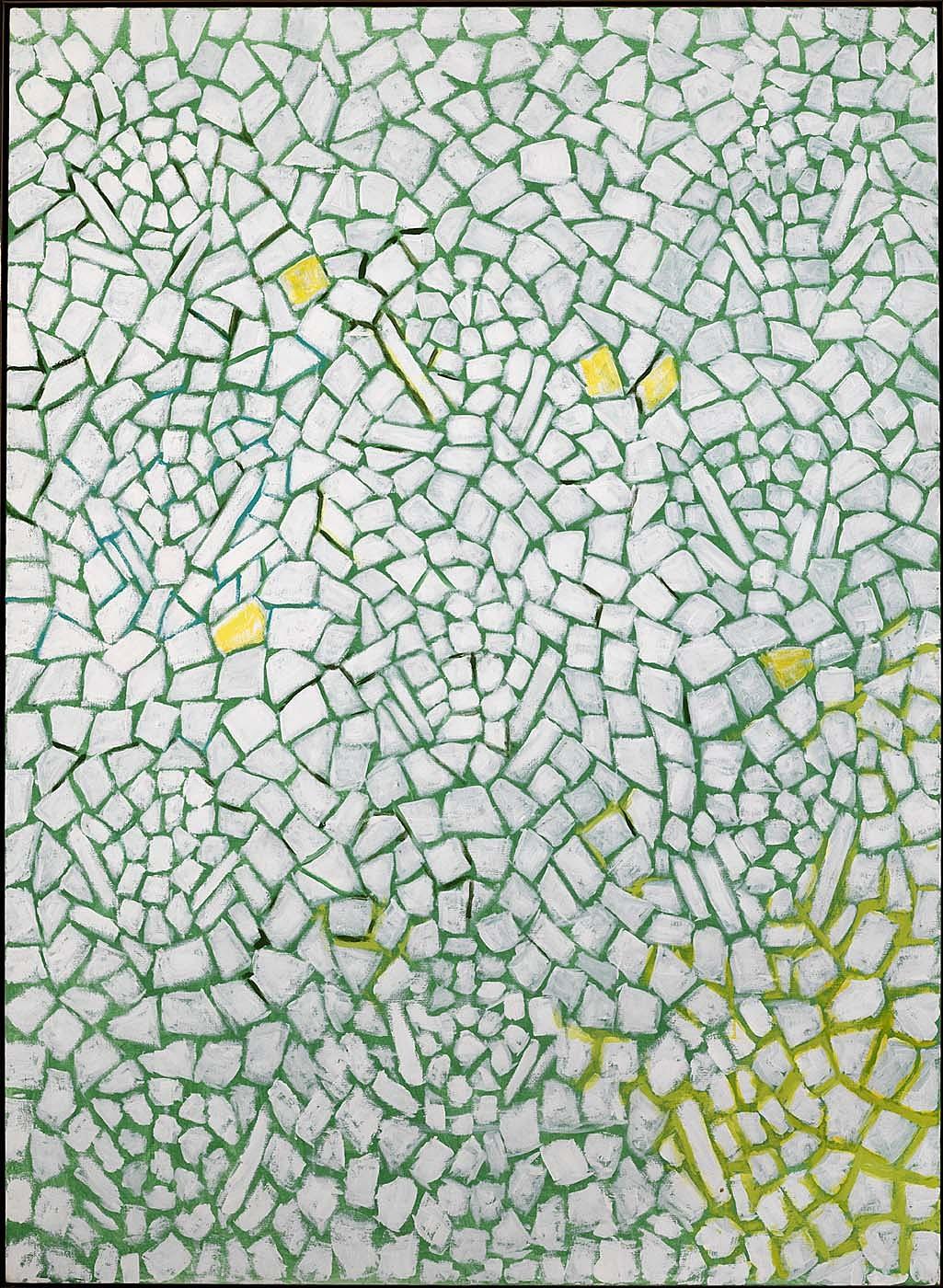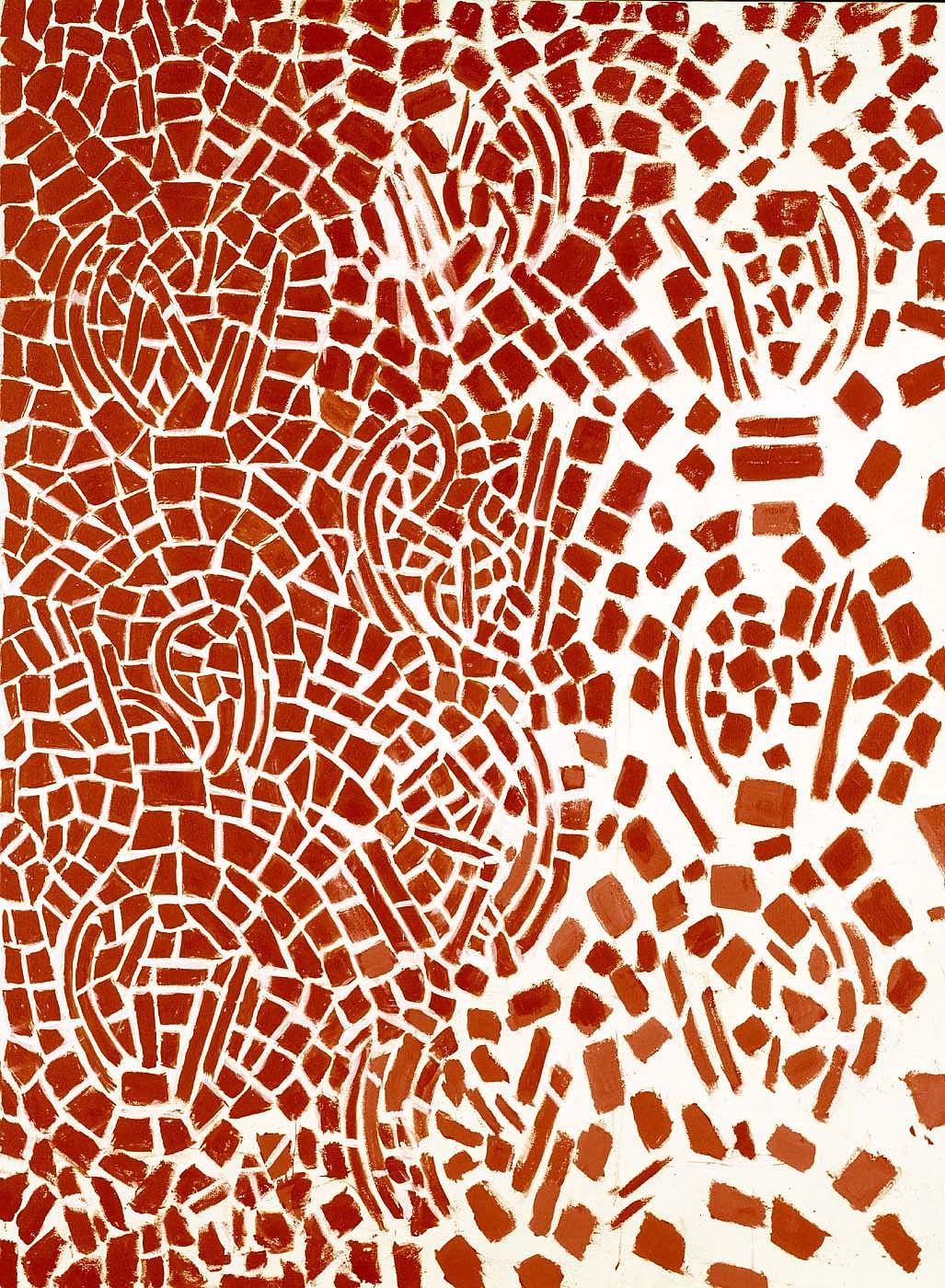
Alma Thomas’s distinct artworks, with geometric shapes that appear to come alive in various forms, are a hallmark of her artistic style.
Well-versed in the theory of how colors interact, Thomas was attentive to the interconnections between musical and visual art—how, in each, compositional elements are put in sequence and contrast to create harmony, melody, balance, and rhythm. Thomas loved music and often listened to the radio or played albums and mixtapes as she worked. Her selections were eclectic, ranging from rhythm and blues to the soundtrack for 2001: A Space Odyssey.
Melissa Ho, curator of twentieth-century art, explains this deep connection: “Paintings [with] titles [that] have musical references… is something that Alma Thomas did quite a bit. She loved music. She listened to music when she worked. She even had a special mixtape that she had created just for listening to in her studio. And, of course, looking at the paintings, there's something very musical about the way she employs pattern and repetition in her paintings. These are also some of her later works. Alma Thomas passed away in February of 1978. So looking at works from 1976, 1978, these are late in her life…yet, they definitely show an artist who is still experimenting, still innovating. One thing that's really striking here, because she had so much success with her paintings that were structured as stripes, here she's not using that format anymore. She's not working in these bands of color. She's instead using irregular shapes to make this almost mosaic-like composition, like there's tiny pieces of tile being placed together.”
Taking a closer look at White Roses Sing and Sing and Untitled (Music Series), Ho notes: “If you look at White Roses Sing and Sing at the ground color, it's peeking out between the white forms, and it's not a simple, flat application of green. There's all these different variations within that green. And this is something that is noticeable in many of Alma Thomas’s paintings. She's also gone back in with yellow to augment that background color. You can see that in the bottom right corner. She's also accented some of the white shapes with yellow in a few places around the canvas. And she's just so on fire creatively during this period. She's just working so confidently. And even though she gives the work this seemingly descriptive title, White Roses, it's really an abstract painting. The point here is not to identify a rose in the painting, but that her inspiration was coming from perhaps imagining the effect of petals falling to the ground with light passing through them. She's drawing on a lifetime connection with natural forms, a lifetime connection with how plants interact with light, and she's giving us a sensation of a thing rather than a description of the thing itself.”
Ho continues: “Looking at Untitled (Music Series), the red and white painting, you can especially appreciate how she's creating a sense of motion and vibration in the work by making that pattern be tighter to the left and then it's sort of activated and loosens up as you move towards the right. There's this sense of boldness and freedom and also decisiveness in how she's laying down the paint that is so telling of an artist who is fully come into her own, who is fully realized and feels just absolutely confident in her mastery of her medium.”
Alma Thomas lived in a world where the performing and visual arts were intricately woven and reflected in her masterpieces. Explore these connections by visiting the exhibition Composing Colors: Paintings by Alma Thomas or listening to the audio tour.





















